Science Driven: The Importance of Credible, Validated Research


When it comes to scientific research, there are internationally recognized processes that provide confidence in research findings. For published research, these processes culminate with the peer review process. Peer review has been described as an integral part of scientific publishing that confirms its validity. There are different forms of peer review, but the process, which has been around for more than 300 years, empowers experts to provide comments to improve papers and validate research.
Sense about Science, an independent charity that challenges the misrepresentation of science and evidence in public life, is clear in its criticism of studies that have not passed the peer review process by saying: “Unpublished research is no help to anyone — if you don’t publish exactly how a study was carried out, others can’t decide whether your methods were valid or repeat them to verify the results. As a society, it is unwise to base decisions about health or public safety on work that may well be flawed.”
For the tire industry, the topic of tire and road wear particles (TRWP) is an important one that requires research that is thorough, credible and validated by experts. Advancing scientific understanding of TRWP and its potential impacts on human health and the environment is a priority for members of the Tire Industry Project (TIP), a voluntary CEO-led sustainability collaboration for the tire sector. We have supported scientific research into TRWP for more than a decade and welcome all credible contributions to advancing scientific knowledge of these particles.
TIP commissions research that follows good scientific practice to help provide credible answers to questions about the fate and potential human health and environmental impacts of TRWP. The studies we have sponsored to date have found TRWP are unlikely to pose significant risk to human health and the environment; however, we are mindful of an evolving scientific understanding of TRWP and are supporting independent research to improve the knowledge base.
Responsive to new scientific findings, our ongoing study plan includes research into the potential impacts of long-term exposure to TRWP, the degradation of TRWP in the environment, and the presence, fate and transport of TRWP in air, soil, rivers and oceans. Tire trade associations are also playing their part, with important science-based initiatives in place in Europe and the United States to bring stakeholders together to further TRWP research and mitigation and to provide tire-tread test materials for TRWP researchers.
These meaningful contributions are rooted in good scientific practice so that stakeholders can confirm the validity of the methods used and repeat the practices to verify the results. They make a credible contribution to the global state of knowledge on TRWP and are useful for making evidence-based decisions about health and environmental safety.
As an organization that is rooted in science, we recognize the importance of transparency and good scientific practice for evidence-based decision making. However, robust science is often overlooked in media coverage of unverified or incomplete research that lends itself to sensationalist headlines and clickbait. The hype and half-truths born of unverified research are a stealthy threat to sustainability when they lead to thinking that undermines progress for people and planet.
When it comes to sustainability, TIP members are convinced that good scientific practice holds the answers. That is why we are committed to the peer review process and convinced that unverified science should be challenged by asking for evidence.
Image credit: Ed 259/Unsplash
This article series is sponsored by the Tire Industry Project. Members of the Tire Industry Project (in alphabetical order) are Bridgestone, Continental, Goodyear, Hankook, Kumho Tire, Michelin, Pirelli, Sumitomo Rubber, Toyo Tires, and Yokohama Rubber.
What It Takes to Recycle More Packaging on the Path to a Circular Economy
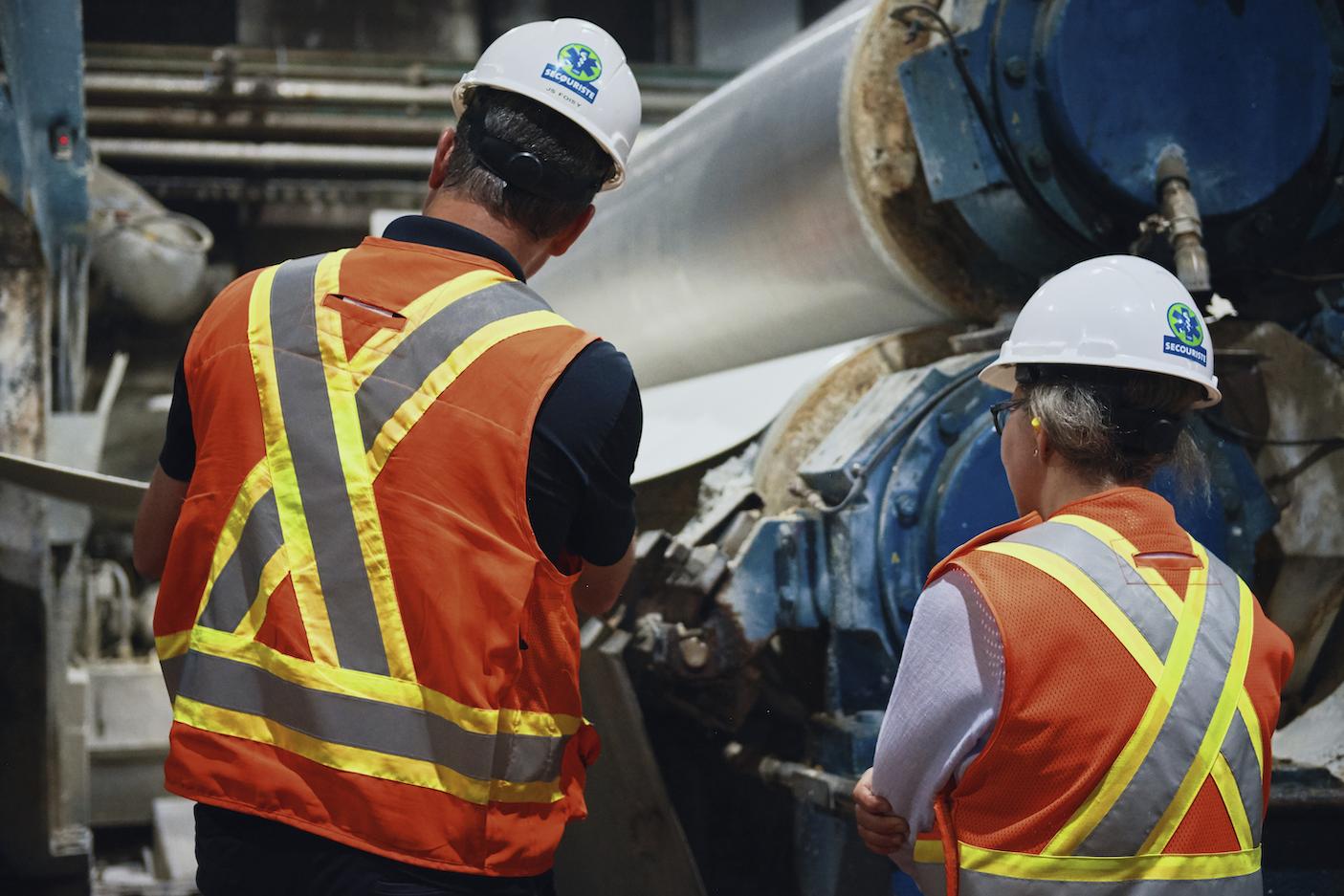
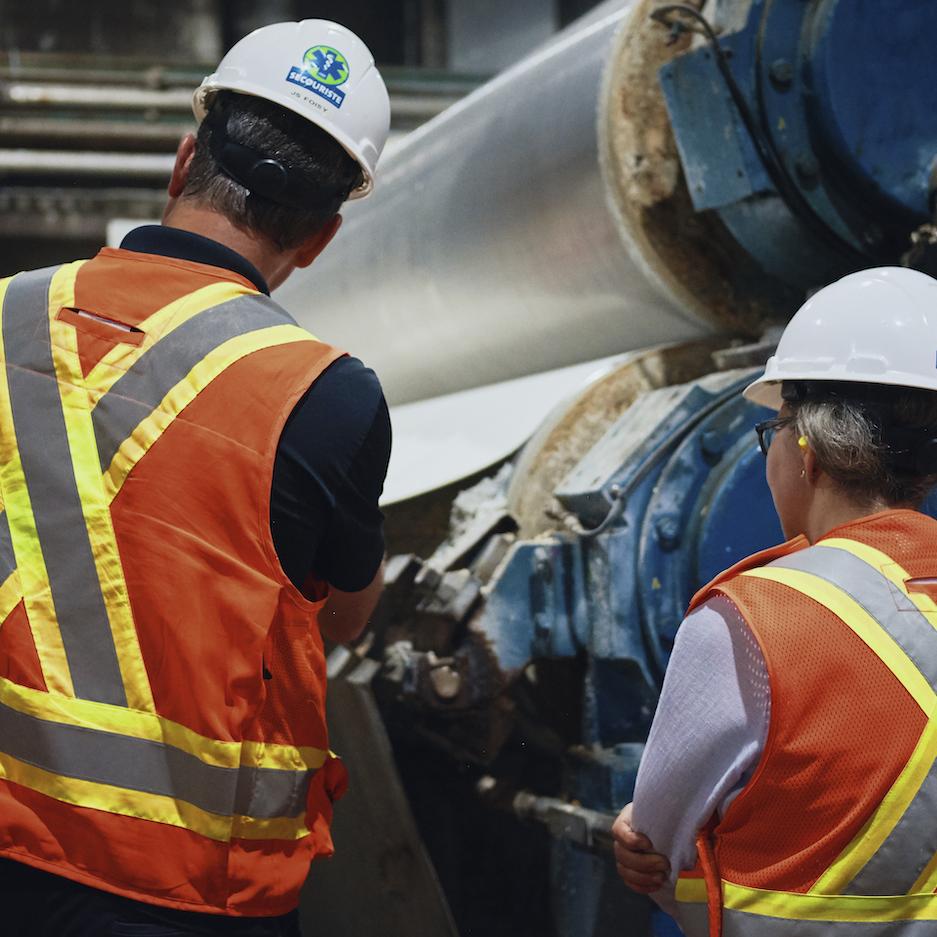
Sustana Fiber's recycling mill in Breakeyville, Quebec, Canada.
Ever wondered what goes into the recycled-content products and packaging you see on store shelves? The short answer: a whole lot. Take Sustana Fiber’s recycling mill in De Pere, Wisconsin, as an example. When the mill opened 30 years ago, it almost exclusively processed paper. Today, about half of the fiber it receives comes from product packaging like tubs, cartons, and even those potato chip cans lined with foil, Jim Schneider, the company’s vice president of operations, told TriplePundit.
The mill’s technology and procedures yield quality that is high enough for truly circular processes — for example, reprocessing a branded coffee cup into fiber that can be used for another food-grade cup by the same brand. Almost all incoming raw material is used for some purpose, whether that’s food packaging or animal bedding.
With expanded capabilities comes a need for supply — and accessing recyclable materials requires efficient community infrastructure.
The U.S. Environmental Protection Agency reports that domestic recycling infrastructure needs to be strengthened on practically every side: Consumers are confused about what to recycle and how, manufacturers and recyclers are missing opportunities to collaborate, and markets for recycled materials are weak. Joe Riconosciuto, Republic Services’ director of materials marketing and recycling, told American Recycler this month that amidst challenges to fiber recycling, “the entrepreneurial drive is alive and well in our industry.”
For its part, Sustana Fiber certainly hasn’t been waiting for paper to drop onto its doorstep. Through collaboration with local and national stakeholders, the company has been able to expand its offering, which means more business for the recycling mill at a time when fiber sources like office paper and newsprint are on the decline. It also means more businesses abiding by circular principles, keeping products and materials at their highest value as they move through the economy and eliminating as much waste and pollution as possible along the way.
Turning linear relationships between businesses and recycling mills into circles
Essential to a recycling mill’s advancement are partnerships with the companies that design and sell products, with the goal of helping these brands to use more recycled materials and make their packaging easier to recycle.
For example, labels and other promotional materials are one market where Sustana Fiber sees promise. “That is a perfect example where there's a very valuable fiber source that currently, for the most part, is going to landfill,” Schneider said. Sustana Fiber has developed technology to remove the siliconized layer from the label liner and get the fiber clean enough to make new labels, a process that would gum up conventional machines, and the Wisconsin mill is working with some of the largest U.S. label suppliers to create a system that’s more circular.
In other cases, Sustana Fiber works with businesses as they develop new products. In an ideal scenario, companies would reach out to their local recycling mills to make sure the products they’re designing are compatible with the mills’ machines. “I don’t need to know what it is,” Schneider said. “But I could tell you very quickly if it’s going to recycle in our process.” One piece of advice he shares with companies is to be careful about how they innovate away from plastic. Though it has its problems, plastic is one of the easiest materials to separate from fiber while recycling and the materials used to replace plastic in some applications can be more difficult to process.
When partnering with businesses, the connection usually starts out linear — with a company wanting to recycle their products or packaging at end-of-life. “As these relationships develop, that’s when that one-sided line starts to curve and turn into a circle. Well, you have to start a lot of lines before you get a circle,” Schneider said. Eventually, some businesses are willing to step up from simply recycling their materials to putting that recycled material back into their products.
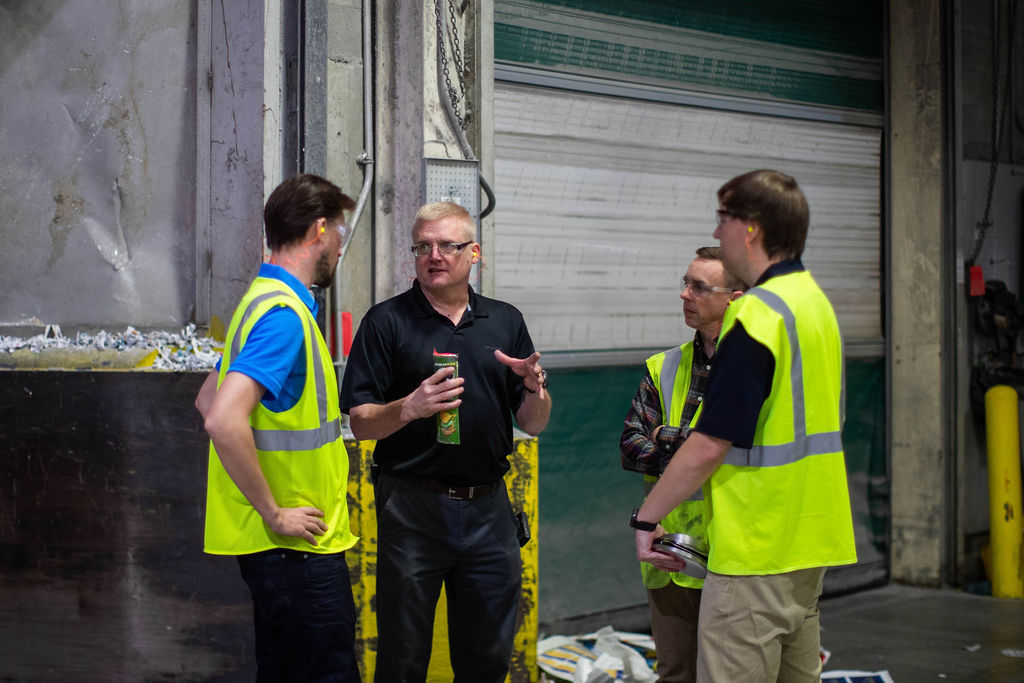
Throw out push marketing and empower consumers to pull recycling forward
The other side of outreach lies with consumers — and when it comes to educating the public, push marketing doesn’t do much good. “You want the brand owners or the consumers being the ones pulling these things through,” Schneider explained.
In an effort to engage greater consumer buy-in, in 2018 Sustana Fiber partnered with the Carton Council, an industry organization that aims to expand the recycling of cartons in the U.S. Efforts from that year-long collaboration included chat bots and quizzes on social media, as well as a pledge. “The Carton Council is doing a very good job in getting some of the messaging out there that these materials are recyclable,” said Schneider. “[Cartons] are very viable sources of fiber.”
In another move to collect more recyclable material through education, Sustana Fiber recently signed a commitment to increase the recycling of paper cups. The company is joined by North American paper mills and end markets that collectively represent 75 percent of mixed paper demand in the U.S. and Canada. “All recycling depends on end markets, and not all mills are readily equipped to separate the plastic coating found on paper cups,” said Natha Dempsey, president of the Foodservice Packaging Institute, the organization that facilitated the commitment, in a statement. “However, the facilities that signed this declaration are shining a spotlight not only on their ability, but their commitment to accept paper cups.”
Ultimately, Schneider would like to see everyone along the fiber supply chain understand the value of so-called end-of-life materials. “We do not want [fiber] to end up in a landfill, because it’s an excellent raw material that has a long life to it, beyond its first or second use.” Overall, he is hopeful about the direction the industry is taking: “I do believe right now we’re at a point where, really, people are starting to act more than just talk.”
This article series is sponsored by Sustana Fiber and produced by the TriplePundit editorial team.
Images courtesy of Sustana Fiber
MAGA Movement Tests the Limits of ESG
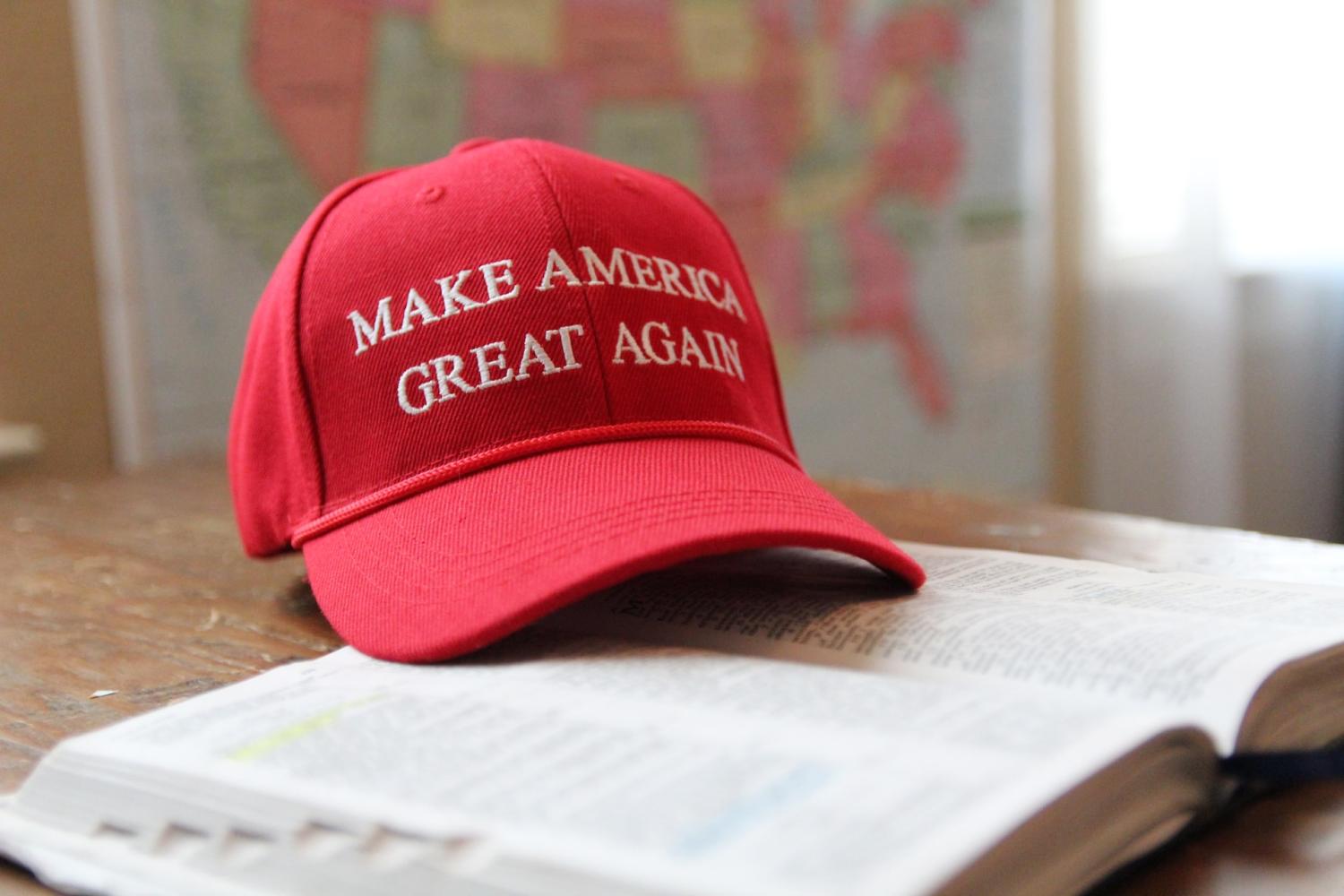

Advocates for corporate environmental, social, and governance (ESG) principles have worked to demonstrate that socially responsible businesses produce bottom-line results. Nevertheless, many corporations and financial influencers continue to support the MAGA movement, which has now embraced an anti-business platform that threatens the very core of ESG principles.
The MAGA movement and the Big Lie
If there is any doubt that the MAGA movement is a threat to ESG principles, consider its roots in the 2016 campaign of former U.S. President Donald Trump. As a candidate, Trump married the "Make America Great Again" slogan with a heady brew of racism and xenophobia.
In the hands of Trump, the MAGA slogan also became code for the entitlement of any single individual to overpower facts, evidence, and professional experience with their personal beliefs, opinions and conspiracy theories.
Editor's note: Be sure to subscribe to our Brands Taking Stands newsletter, which comes out every Wednesday.
The entitlement strategy began to take shape as early as 2011 when Trump latched on to the “birther” conspiracy. He repeatedly asserted his right to question then-President Barack Obama’s qualification as a natural-born U.S. citizen. Trump brayed about it over and over again throughout the 2012 election cycle, despite ample documentation of Obama’s birth in Hawai‘i.
By election day, he had fully merged the birther conspiracy theory with the “Big Lie” election fraud canard. “On election night in 2012, when President Barack Obama was reelected, Trump said that the election was a 'total sham' and a ‘travesty,’ while also making the claim that the United States is ‘not a democracy,’ after Obama secured his victory,” ABC News observed.
“Trump even wrote on Twitter, ‘We can't let this happen. We should march on Washington and stop this travesty. Our nation is totally divided!’" ABC News also noted (emphasis added).
Turning up the Big Lie volume
As a candidate in the 2016 election cycle, Trump leveraged the personal entitlement strategy to claim the office of the president of the United States for himself, long before voters headed to the polls.
“Day after day — at rallies, in interviews and on Twitter — Trump and several top backers have hammered the message that a victory for Hillary Clinton would be illegitimate," NBC News reported in October 2016. "Trump has frequently suggested that widespread voter fraud will swing the election, and he has urged his supporters to closely monitor the voting process.”
“In a tweet ... he declared that there's ‘large-scale voter fraud happening on and before election day,’” NBC News added.
Weaponizing MAGA against ESG
The personal entitlement strategy almost enabled Trump to claim a second term through a violent uprising, justified by persistent lies about election fraud.
That was the beginning, not the end, of the threat to ESG principles, as the impact on American democracy has continued to spread and amplify.
Personal entitlement to one’s own beliefs — regardless of supporting evidence or widely accepted social standards — is the connecting thread between new abortion bans, anti-trans legislation, book bans, gag rules on educators, and the hysteria over critical race theory.
Above all is the Big Lie about election fraud. Trump is long gone from office, but scores of MAGA-affiliated candidates have taken up the Big Lie mantle to entitle themselves to office, regardless of the results on election day.
There are no “both sides” to ESG
In recent months, the MAGA movement has also thrown the threat to ESG principles into sharp relief by embracing an anti-business platform aimed at “woke” corporate leaders who advocate for ESG principles.
The anti-ESG movement has already gone beyond rhetoric to attract legislators in Texas and elsewhere.
That should be a wake-up call. However, ever since the failed insurrection of 2021 the corporate response has been mixed at best, if not outright supportive of MAGA-affiliated candidates and office holders.
To cite one high-profile example, Home Depot continues to drag the MAGA baggage of co-founder Bernie Marcus, who supported Trump’s bid for re-election in 2020.
Marcus left the company a full 20 years ago. However, his eye-popping donation of $1.75 million in support of the Trump-approved U.S. Senate candidate Hershel Walker this year has drawn new attention to Home Depot’s corporate support for the National Republican Senatorial Committee and other Republican campaigns.
“The Home Depot PAC donated $90,000 to the National Republican Senatorial Committee amid the current election cycle. The committee recently paid for an attack ad targeting Walker's opponent, Democratic Sen. Raphael Warnock,” USA Today reported last week. “The Home Depot PAC has also donated thousands of dollars to other PACs that support Republicans, including those affiliated with Senate Minority Leader Mitch McConnell, Tennessee Sen. Marsha Blackburn and South Dakota Sen. John Thune."
In an email to USA Today, Home Depot spokesperson Sara Gorman explained that the Home Depot PAC "supports candidates and organizations on both sides of the aisle who champion pro-business, pro-retail positions that create jobs and economic growth."
However, when one side of the aisle is dominated by MAGA-affiliated candidates who champion positions that are antithetical to ESG positions, there are no both sides.
All Republican candidates have been tainted by the MAGA brush, but according to data cited by USA today, the Home Depot PAC continues to provide outsized support to Republican campaigns.
“About 73 percent of the PACs that received donations from the Home Depot PAC are Republican... Of the Senate candidates who received contributions from the PAC, 88 percent were Republicans,” USA Today fellow Eleanor McCrary observed.
Democracy — and the bottom line — really are on the ballot
If U.S. business leaders don’t care whether or not the nation morphs into an authoritarian form of government, they may be motivated to act on a bottom-line basis.
A Morning Consult survey commissioned by the organization Business and Democracy Initiative indicates that business leaders are well aware of the connection between a strong democracy and a strong economy.
Among the findings: 96 percent of business leaders say the existence of a well-functioning democracy is "important" to a strong economy, and more than 80 percent of business leaders think that companies should act to protect democracy and ensure safe and fair elections.
With that information in hand, the organization Accountable.US has sent letters to the CEOs of all Fortune 100 companies, warning that their professions of social responsibility are ringing hollow.
That comes too late to stop corporate funds that are already in the MAGA pipeline, but all business leaders can help undo the damage by ensuring that their employees, clients and customers — especially women, people of color and youth — have a free and fair opportunity to vote in the 2022 midterm elections.
Image credit: Natilyn Hicks via Unsplash
Big Food and Nutrition: It’s Branding, Not Reality
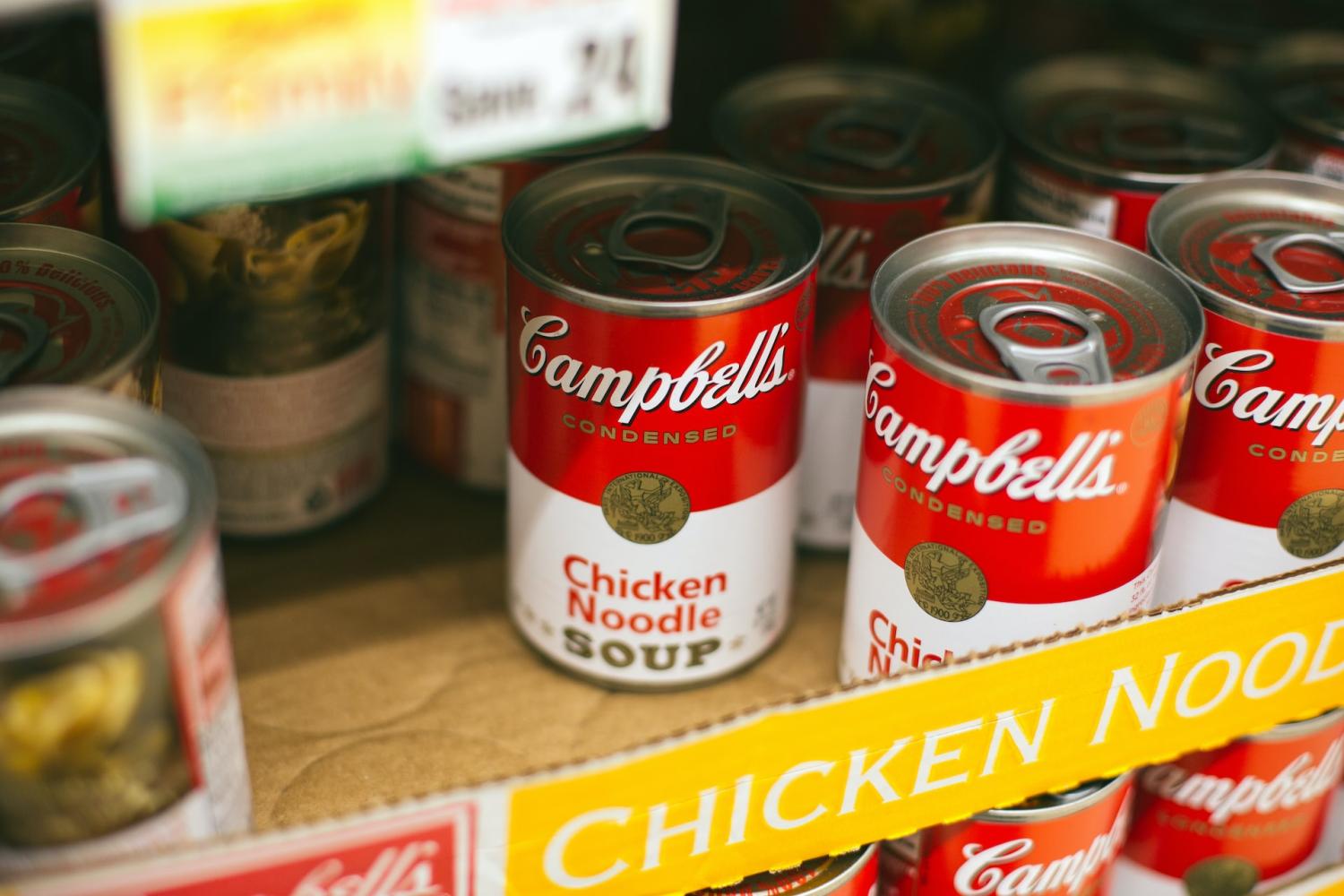

At a time when inflation is pushing more people toward food insecurity, America’s largest food companies are in a position to assist when it comes to improving nutrition nationwide. To start, they are primed to expand access to healthy food through their abilities to scale up food production. But that isn’t the reality, at least when it comes to producing, distributing and selling nutritious food products.
At least, that’s according to the Access to Nutrition Initiative (ATNI), which rolled out a report this week ranking the “nutrition” claims of the largest food companies doing business in the U.S.
Editor's note: Be sure to subscribe to our Brands Taking Stands newsletter, which comes out every Wednesday.
Among the ongoing public health problems: At least one in six young Americans are obese, and about 10 percent of the population experienced food insecurity during 2020. How can companies help? Obviously, improving the nutritional profiles of their food products is one tactic. But engaged company leadership committed to making nutritious foods, i.e., governance, is also important, ATNI advises. So is ensuring that access to healthy foods is possible for low-income families, and the promotion and marketing of such foods was also on ATNI’s radar.
But based on how these 11 companies scored, that isn’t happening.
Unilever: governance and leadership counts when it comes to nutrition
The winner in these rankings is Unilever. The big reason? The company has a relatively bold commitment to boost its share of highly nutritious foods this year, and based on the sheer tonnage of such products sold, it’s delivering on that pledge. Unilever has also continued to report on its sugar and sodium reduction targets. Strong governance, as in leadership coming from the C-suite, is also why Unilever outranked 10 other large food companies doing business in the U.S.
“Accountability of Unilever’s nutrition strategy lies with senior leadership, and it is one of three companies that link remuneration of senior leadership to nutrition objectives,” the ATNI report found.
Conagra: How about those plant-based meals?
Somewhere in the middle is Conagra. Overall, the company that’s the force behind brands such as Birds Eye, Chef Boyardee and Vlasic only ranked ninth out of the 11 ranked companies. But in terms of the percentage of sales from “healthier” products, Conagra ranked first after ATNI crunched the numbers, with that ratio a smidge under 50 percent. ATNI didn’t outright mention the company’s plant-based brands such as Gardein, but credited Conagra’s ability to have more than 80 percent of its vegan and vegetarian meal products meet its internal nutrition score.
One area where ATNI dinged Conagra was in its marketing efforts: “Conagra is encouraged to commit to increasing the proportion of marketing spending on healthy products relative to overall marketing spending and publish a commentary outlining the changes to the company’s marketing spending in support of healthier eating.” Ouch: Perhaps a little more promo of Boom Chicka Pop is needed, rather than that laser focus on ensuring Slim Jims are strategically placed next to all those convenience store cash registers.
The sugary drink giant ranks at the bottom
Coca-Cola ranked dead last. ATNI called out the beverage giant for being the only company in its index that hasn't adopted any sort of nutrient profiling system. The report also notes that the company lacks a plan for reaching any sugar or calorie reduction targets. And while the company is burnishing its dairy and juice product portfolio, not much is going on with other foods based on ingredients such as fruits, nuts, legumes or vegetables.
As for Coke's philanthropic efforts, ATNI responds: “Coca-Cola makes in-kind donations of its products in the U.S., primarily for disaster relief efforts. However, the company does not have a policy in place to limit the donation of unhealthy products and prioritize donations of healthy products, nor does it track its product donations.”
What's next?
What’s notable about these rankings is that none of these companies had particularly stellar scores from ATNI’s point of view. When it comes to nutrition, these 11 companies are more in the midst of a race to the bottom rather than doing their part to bolster public health here in the U.S. That’s not a surprise considering many of these companies’ lobbying and public relations campaigns aiming to stifle just about any legislation designed to tackle America’s obesity problem.
Bottom line: When it comes to integrating nutrition into their core business models, mapping out affordability and accessibility of healthier food options, and marketing the “good stuff” as opposed to promoting sugary drinks and snacks, Big Food has been a big fail on meeting these challenges.
Finally, ATNI’s assessment of the food and beverage sector’s efforts is summed up in how it feels about these companies’ lobbying efforts. “Companies are encouraged to actively support (and commit to not lobby against) public policy measures in the U.S. to benefit public health and address obesity as enshrined in the National Strategy on food, hunger, nutrition, and health,” the group concludes.
Image credit: Calle Macarone via Unsplash
Who Believes In ESG? The U.S. Department of Defense, That’s Who


Joint Base Pearl Harbor-Hickam, Greater Honolulu, Hawai‘i
A growing body of evidence has established that ESG (environmental, social, governance) principles are good for business. The U.S. Department of Defense (DoD) is also applying similar principles to decarbonize its operations and plan for the impacts of climate change. A new solar project in Hawai‘i illustrates how ESG principles are being put to service for national defense.
The Department of Defense embarks on an energy transition
During the Obama administration, the Department of Defense embraced a high-profile position as a market-mover and advocate for climate action, including solar energy, biofuels, energy efficiency and other clean technologies. Despite the lack of support for climate action by former President Trump, the DoD continued to invest in decarbonization during the Trump administration as well.
The U.S. Air Force apparently could not wait for former President Trump to finish his term. Just a few weeks before Election Day 2020, the Air Force publicized a carbon-negative goal for itself and the entire DoD. The Army also announced a net-zero goal for itself last February.
New opportunities for U.S. businesses
All of this translates into new opportunities for U.S. firms that do business with the DoD, and the pile is growing. A Pew Research study from 2011 calculated that the U.S. Department of Defense increased its clean energy investments from only $400 million in 2006 to $1.2 billion in 2009. At the time, Pew anticipated that DoD would spend more than $10 billion on clean energy annually by 2030.
At a federal budget hearing last June, the DoD also emphasized the connection between clean technology and national security. “The department is addressing a change of technology operational and policy initiatives to enhance the use of energy and warfighting. To that end, we are requesting $4.3 billion in energy investments, including both insulation energy and operational energy," the DoD said.
The DoD is also pursuing the low hanging fruit of energy conservation, with the help of the Energy Resilience and Conservation Investment Program. The energy conservation program was established under the federal military code in 2006, as part of an agency-wide energy funding initiative aimed at resilience and readiness as well as conservation and cost-cutting. The Defense Department requested approximately $287 billion for the program in the FY 2020 budget.
Clean energy for the community, too
In addition to its interest in the energy resilience and health of its own facilities, the DoD also recognizes that a strong national defense depends on the health and resilience of the surrounding communities.
That approach is illustrated by a new solar array and energy storage project to be constructed on 131 acres of federal property at Joint Base Pearl Harbor-Hickam's (shown above) West Loch Annex in Hawai‘i, on the island of O‘ahu. The 42-megawatt Kūpono Solar Project broke ground last week. Once up and running in 2024, it will deliver enough clean energy to the grid for 10,000 homes.
Ameresco, the project developer, estimates that the project will shave 50,000 tons of carbon dioxide from the carbon footprint of Hawai‘i.
“This is a great example of climate action, building access to clean, reliable energy sources inside and outside the fenceline,” emphasizes Meredith Berger, Assistant Secretary of the Navy for Energy, Installations, and Environment.
“The Department of the Navy is proud to partner with the Kūpono Solar team and Hawaiian Electric as we enhance mission and community resilience and move purposefully towards Hawai‘i and Navy’s energy goals,” she adds.
Military contractors are on board with ESG
There is clearly some tension between military operations and ESG principles. That has tested the limits of ESG funds, which tend to avoid defense and aerospace stocks.
Nevertheless, military contractors have begun advocating for ESG principles within the DoD. The leading DoD contractor and advisor Noblis, for example, has noted that DoD’s annual Sustainability Report and Scorecard could be expanded.
Specifically, Noblis makes the case for expanding the Executive order that established the Scorecard, to implement science-based targets and other hallmarks of mature ESG reporting.
“Expanding EO requirements involves increased disclosure and planning related to sustainability, climate risks and environmental justice which apply to all DoD program areas as well as the Department’s overall mission,” Noblis explains.
“The DoD has also identified environmental justice as a critical practice while its national defense mission is working to include it as a key consideration in its governance structure. An ESG framework to reporting and planning meets EO requirements, strategically incorporates insights from relevant stakeholders and leadership and advances DoD missions,” the DoD concludes.
Next steps for ESG
The ESG movement has come under fire from Republican office holders, candidates and other allies in recent months. The attacks are as timely as they are political, as the ESG movement is increasingly at odds with the issues selected by GOP leaders to satisfy and motivate their electorate. That includes climate change conspiracy theories and the election fraud lies, in addition to attacking LGBTQ rights and abortion rights, among other issues.
In contrast, the national defense and corporate focus on climate action, human rights, civil rights and transparency dovetails with the positions espoused by an overwhelming majority of Democratic office holders and candidates, and their allied stakeholders.
The political consequences are clear. The ESG movement has cut the Republican Party adrift from both business and national defense. They continue to soothe the shattered nerves of their voters with a barrage of lies about election fraud, because that is the only case they can make.
Image credit: DoD Media
Worldwide, 80 Percent of Cities Faced Climate Risk in 2022


Seoul, South Korea
Four out of five cities worldwide faced climate risk in 2022, according to a new report released by CDP. The study tracked almost 1,000 cities from Jan. 1 through August 16, and it found that 80 percent of them faced risks ranging from extreme heat and heavy rainfall to drought and flooding. Additionally, 28 percent of the cities faced climate risk that threatened more than 70 percent of their populations.
Vulnerable communities face the most dire climate risk
More than half of the world’s population lives in cities, though cities cover just 3 percent of the world’s surface; 62 percent of them are facing climate hazards that are expected to intensify in the future. Vulnerable groups are at the highest risk of intensifying and increasing climate risk. According to the CDP report, “Between 2010 and 2020, deaths from floods, droughts and storms was 15 times higher in highly vulnerable regions, compared to regions with very low vulnerability.” Because these groups of citizens are the most negatively affected by climate hazards, effective climate action must simultaneously address the risks brought about by social inequalities.
The most vulnerable are also the smallest contributors to global greenhouse gas emissions. Fifty percent of global greenhouse gas emissions are from the wealthiest 10 percent of the world’s population. The poorest 50 percent is only responsible for 7 percent of total emissions. The World Bank estimates that 132 million people will be pushed into extreme poverty due to the impacts of climate change.
Cities can be hubs of climate innovation
Cities are responsible for 70 percent of total global emissions, but they are also key to climate progress. The new CDP report noted, “Close to half of cities have set a city-wide emissions reduction target… More than three in five cities are taking adaptation actions, while close to two thirds are taking emissions reduction actions.” Climate action in cities has also led to a number of other positive side effects, including economic, social and human health improvements.
The report found that while climate action produces positive results for all cities that undertake them, cities that center the needs of people in their climate planning and implementation processes see even greater positive co-effects. People-centered climate actions can include engaging with the community to collaborate on climate planning, creating adaptation goals that also target issues like air or water quality, or undergoing a climate risk and vulnerability assessment (CRVA) that considers the needs of the most vulnerable populations in a city.
For example, Chicago created its climate action plan with the participation of more than 2,000 residents across almost every neighborhood in the city. Organizers developed a series of surveys in order to center community priorities. The survey results showed a community priority of pollution reduction and better air quality, which were incorporated into the city’s Climate Action Plan.
Putting people at the heart of climate action
“Putting people at the heart of climate action, from planning to implementation, improves lives," said Maia Kutner, CDP’s interim global director of cities, states and regions. "It unlocks social, economic and environmental benefits, enhances equity and inclusion, and ensures a just transition to a low-carbon economy. Cities that identify vulnerable groups, engage with them, and understand their needs to deliver just adaptation strategies see the clear benefits and create a sustainable future for people and the planet.” The CDP study shows that cities implementing people-centered climate actions also saw improvements in air quality, food security, water security, job creation, soil quality and increased green space.
In its report, CDP calls on cities to set science-based emissions targets and to undertake a CRVA that considers their most vulnerable populations. Approximately 63 percent of cities surveyed are currently taking a people-centered approach to climate strategy, which will become increasingly important as cities face new and intensifying climate hazards.
Image credit: Yohan Cho via Unsplash
Subaru and LA Auto Show Fetch National Attention with Dog Adoption Program


Many people attend auto shows to learn about the latest innovations within the automotive industry, but attendees who stop by the Subaru booth might end up leaving with a new family member.
Since 2018, Subaru has partnered with auto shows across the country, including the Los Angeles Auto Show, to help find loving homes for adoptable dogs. The initiative is part of the Subaru Love Promise, the company’s philanthropic and social impact mission. Throughout the year, Subaru focuses on five different foundational pillars that make up the Love Promise: helping find loving homes for pets, preserving the environment, giving back to local communities, helping those in need and supporting childhood education.
“Subaru and our retailers are dedicated to making the world a better place, simply because it’s the right thing to do,” said Julie Campbell, shows and events specialist for Subaru of America. “The Subaru Love Promise is really a commitment to improving the lives of those around us — not just with donations, but also with actions that bring us closer to the community and encourage others to get involved to increase the cumulative impact.”
Dog adoption programs help furry friends find loving homes
Since 2018, Subaru and its retailers have donated $465,000 to aid pet organizations and have helped 867 pets find loving homes at the LA Auto Show and other auto shows across the country. Plenty of dogs are finding loving homes thanks to Subaru Loves Pets, a pillar of the Subaru Love Promise, but these happy occasions also come as the result of thorough planning and collaboration with the show’s organizers.
“We figured out everything from the logistics of poop bags to everything else you need to do a dog adoption at an auto show,” said Terri Toennies, president of the LA Auto Show. “We know that the puppies get tired, so we bring in the dogs in shifts to let them take naps throughout the day as needed.”
When the partnership first started out, it was a bit of a challenge to gain traction with local pet organizations and animal shelters. After all, pet organizations are not exactly accustomed to fielding dog adoption requests from auto shows. That’s all changed in the last few years as shelters across the nation have perked their ears and heard about the automaker’s work.
“Now that people have seen what this is and seen coverage about it on the news, they’re saying, ‘I’m happy to help!’ ‘Can I get on board?’ ‘We’d like to sign up,’” Campbell said.

From COVID-19 slowdowns to rapid expansion
The pandemic disrupted the growth of the dog adoption effort, but Subaru bounced back in 2021. “This past show season, 2021-2022, was when we really got our legs under us,” Campbell said. “We participated in 43 shows, and we had 279 dogs adopted.”
With animal shelters eager to participate and a full schedule of 45 auto shows booked for the 2022-2023 season, the Subaru Loves Pets auto show adoption program shows no signs of slowing down. “We have actually had a few people that were specifically coming to the show because they wanted to adopt a dog,” Campbell said.
The dogs aren’t just entertaining for customers. Toennies said that amidst a bustling auto show, with thousands of people milling about, having an area to briefly relax with the adoptable dogs is also therapeutic for auto show employees. “From our standpoint it’s really cool, because the Subaru booth is right underneath our show office,” Toennies said. “I can look down on the booth all day long and see the dogs coming and going.”
Because the dogs have been such a smash hit, Subaru has explored the idea of expanding the program to other pet species, but the team doesn’t want to bite off more than they can chew.
“We have looked at the idea of having other animals,” Campbell said. “Cats would probably be a little bit more doable, but they’re still escape artists. So, the concern would be a cat getting out, running all over the auto show, getting into the cars and just being a little bit difficult to recapture.”
Cats and cars may sound like a plan fated to go awry, but they aren’t the only critters deemed too chaotic for the auto shows. “We just got a call this last week that an exotic reptile company wanted to exhibit,” Toennies said, “and we said ‘No, thank you!’”
The dogs are the stars of the show, and it doesn’t sound like they will be losing their spot to cats or lizards anytime soon. Nearly 70 percent of Subaru owners have pets, and at least half of those are dogs, so focusing on canines makes sense. Soon, the auto show adoption events will have helped over 1,000 dogs find homes, demonstrating the program clearly resonates with Subaru’s consumer base.
“The thing that is so special to me about these events is seeing how much joy they bring to so many people, the look of anticipation on the faces of these people,” Toennies told us. “They’ll wait in line to get into the dog park, and they will wait for the opportunity to love on these dogs.”
Most car salespeople want to put you in a new car, but the team at Subaru wants to put a new dog in there with you. Check out the Subaru booth at your next local auto show, and you just might find a new set of wheels and a four-legged friend to boot.
This article series is sponsored by Subaru and produced by the TriplePundit editorial team.
Images courtesy of Subaru of America, Inc.
Why Impact Investing Needs Philanthropy and Catalytic Capital


Over the past several years, the global impact investing field has expanded like never before. Looking ahead, it is worth considering what impact investing’s further growth and mainstreaming could mean for philanthropy and foundations and the dynamic role they have long played.
Informed by almost 40 years and more than $700 million of impact investing, the John D. and Catherine T. MacArthur Foundation sees three main ways that philanthropy should continue to engage.
First, grant funding is needed to support further development of sound, widely accepted standards and policies for impact measurement and verification. Second, foundations provide critical support to the networks, experts, and thought leaders who help investors, investment advisors and asset managers connect, learn, and innovate. Third, philanthropy can practice impact investing directly.
By example and through partnership, foundations help advance growing engagement in values-aligned and sustainable investing. And, by leveraging our rich legacy of catalytic capital leadership, foundations help the impact investing field expand and accelerate its progress toward a more just, resilient, and inclusive world. Pioneered by the Ford Foundation and followed by the Packard and MacArthur foundations in the early 1980s, catalytic capital is patient, risk-tolerant, and flexible investment that seeds, scales, and sustains impact-generating organizations, usually with the goal of mobilizing capital from other sources, often in large multiples. This can happen by shifting risk and return through a guarantee or blended finance structure, or by making an early bet that helps an unproven but promising enterprise build its scale and track record to attract more investors over time.
Our experience as an early investor in the U.S. field of Community Development Financial Institutions (CDFIs) demonstrates the important role of catalytic capital and its lasting, outsize impact. In the early 1970s, pioneering, community-focused development banks and loan funds arose in Chicago and elsewhere, often in direct response to the devastating policy and practice of redlining, which denied Black and under resourced communities access to mortgages, insurance, and other essential forms of capital for decades. The early impact investments made by the Ford and MacArthur foundations throughout the 1980s and 1990s helped seed and scale dozens of promising new loan funds, banks, and credit unions. By 1998, CDFI leaders made the case for a new U.S. Treasury program which accelerated the industry’s spread and development nationwide.
When the COVID-19 pandemic reached the U.S., roughly 1,300 certified CDFIs were at work nationwide, managing more than $222 billion in assets. Through fast action and collaboration, backed by foundations and mission-driven family offices, they provided critical financial support to hard-hit small businesses—during the pandemic’s early days and as mainstream lenders implementing the federal government’s massive Paycheck Protection Program left out thousands of eligible nonprofits and small businesses, many led or owned by women and people of color.
Next, when the murder of George Floyd, nationwide protests, and a widespread racial reckoning motivated corporations, foundations, and individuals to finance Black and Brown communities and entrepreneurs, CDFIs met the moment again, with established capacity and ready opportunities.
Ultimately, these recent events and other developments helped to draw billions of dollars in new public and private capital to CDFIs over the past few years, including major donations from philanthropist MacKenzie Scott and both grants and investment from Google and other firms.
As an early and longtime CDFI investor, we found this surge of engagement and new resources incredibly exciting. It showed us that $300+ million in catalytic capital, provided to the earliest CDFI pioneers and to other promising groups over time, had ultimately helped build a durable infrastructure for impact at a scale we never imagined originally—with strong potential to continue multiplying the results of our original catalytic capital investments in the decades ahead.
The trajectory of a pioneering “triple-bottom-line” impact capital manager, now known as SJF Ventures, illustrates the lasting and outsize impact of catalytic capital invested in a for-profit, growth equity fund. In 1999, MacArthur made a $1 million investment to help this unproven, mission-driven fund manager seeking to find companies that could generate quality jobs and a greener economy as well as outstanding financial returns. If SJF could successfully demonstrate its innovative approach, its later funds should prove compelling to endowments, pension funds, and other institutions with relatively conventional risk-return objectives and capacity for sizable investments.
Today, SJF has raised and managed five funds, launching its most recent one in 2021 with $175 million in capital from dozens of leading endowments, pension funds, and accredited individual investors seeking risk-adjusted, market-rate returns and authentic social and environmental impact.
Along the way, it has invested in 81 companies which have created more than 12,000 quality jobs across 25 states and that mitigate more than 3 million metric tons of CO2 annually. The positive ripple effects of MacArthur’s $1 million investment in SJF have continued well beyond anything we could have predicted all those years ago.
MacArthur’s 20 year affordable rental housing initiative also shows how catalytic capital can fuel social innovation, strong organizations, and infrastructure for ongoing impact. Abt Associates, in a 2020 evaluation, found that direct enterprise loans MacArthur made to support leading, nonprofit housing developers from 1999-2011 helped these organizations accelerate their growth, strengthen their finances, and generate substantial impact. The affordable rental properties they preserved and improved while our loans were active, plus remarkable results they have continued to achieve, benefit tens of thousands of lower-income seniors, families, and individuals with special needs in communities across the country. Likewise, the New York Housing Acquisition Fund and other, multi-investor funds that MacArthur helped establish have demonstrated how catalytic capital can drive innovation, mobilize other investment through a blended finance structure, and yield lasting impact. Since launching 17 years ago, the fund has deployed $533 million help preserve or create more than 14,000 units of affordable rental housing.
Looking ahead, we anticipate similar long-tail impacts from other elements of our current $500-million portfolio, including a growing set of climate-related investments, over $100 million dedicated to Chicago, and ten funds and NGOs chosen for investment through our Catalytic Capital Consortium initiative.
To help the global impact investing field expand its reach and deepen its impact in the years to come, philanthropy must help catalytic capital secure a strong and enduring role: fueling innovation, cultivating both promising and proven institutions, and supporting enterprises with exceptional impact but moderate returns and/or outsize risk. By working with today’s dynamic, fast-growing community of catalytic capital practitioners, and with other investors across the capital spectrum, we can use catalytic capital to help unleash additional resources and powerful impact to meet our world’s current and future challenges.
Previously published on the Green Money Journal.
Image credit: Michael Schwarzenberger via Pixabay
This TikTok Star is Werking It to Make National Parks More Inclusive


With cooler temperatures, it’s tempting to head outdoors. Maybe visit one of the many state or national parks in the U.S. But for people of color, heading to public lands can be a fraught experience — or maybe one you don’t consider at all.
The barriers to feeling welcome at national parks
U.S. National Parks have an ugly, racist past. And while the U.S. National Park Service (NPS) is grappling with its legacy and working to make its spaces more inclusive, layers of generational trauma make many visitors feel unwelcome. Reasons given for people of color not visiting state and national parks include affordability, access, historical trauma, fear for personal safety and discrimination.
People of color make up only 22 percent of U.S. National Park visitors and 22 percent of U.S. National Park Service employees. Further, only 24 percent of national parks and monuments memorialize marginalized communities such as Indigenous people.
During the first two years of the COVID-19 pandemic, visitations to state and national parks increased, as people often found the outdoors the only safe place to go. However, the numbers declined for marginalized groups not living near a park, including Black and Indigenous Americans. All to indicate that lack of access and awareness continue to remain problems.
Overcoming the obstacles for a more inclusive experience on America's public lands
While the NPS works on diversity and inclusion in its workforce and programs, companies and individuals are also working to get more people of color into parks. Entrepreneur Kween WerK (nom de plume of Parker Bushman) recently took her mixed-race family on a 17-day road trip to highlight how inclusive public spaces, including parks, are to people of color (or are not). Referring to it as the Liberation Tour, she reviewed sites and places in the Inclusive Guide she helped create. The guide has been referred to as a “digital Green Book” — the travel guide that helped Black Americans find safe places to eat and stay in the U.S. — and as a Yelp for inclusivity.
Kween — short for Keep Widening Environmental Engagement Narratives — is a vocal advocate for environmental issues and sees getting people of color into natural places as part of that advocacy. She has stated that she wants “Black, Fat, and Femme” folks like her to be seen in and included in natural spaces. Bushman’s TikTok covers a wide variety of issues to educate, inform and entertain — from hiking and whitewater rafting to how not to be a “Karen” and the intersection between climate and banking.
Bushman’s Liberation Tour covered various issues, such as places where she felt like she had to code switch, places she was followed and sundown towns, as well as places that were open and accepting. She has also partnered with companies to increase her reach. For example, on Public Lands Day (Sept. 24), she partnered with Clif Bar & Co. as she hiked Great Sand Dunes National Park (shown above) and Arches National Park to educate her audience on public lands and bring attention to accessibility and access issues at the parks.
@kweenwerk Happy Public Lands Day! Public lands provide significant benefits to people and the environment. Let's work together to make sure public lands are safe and welcoming for all people. #clifcreator ♬ original sound - 👑 Kween werK 👑
Why inclusivity at national parks, and all public spaces, matters
Studies have shown that being in nature can have a positive impact on mental health. People of color have long had to deal with the microaggressions of systemic racism, but in the aftermath of Black Lives Matter, Asian-American attacks related to COVID-19, the politicization of critical race theory, and other conflicts, open hostility has made many exhausted. Spending time in nature could bring some solace, but not if people do not feel welcome or safe there.
Research has also found that more time in nature increases people’s inclination to protect nature. In addition, climate change’s impacts disproportionally affect communities of color and low-income communities. Spending time in nature could help make that connection between activism and survival — not to mention a chance for people to breathe some clean air.
The bottom line is that public lands are for the public. The systemic barriers built into access to public lands should be removed, but additional work remains to raise awareness of the benefits of that access. Black and Latino voters are more likely to be alarmed about climate change than white voters — likely because they already live on the front lines. Because of their lived experiences, they also bring diverse solutions to the climate action table. Environmental activists like Kween WerK help raise awareness that they deserve access to the public lands they help pay for.
Image credits: Matt Noble via Unsplash
Top Polluting Companies are Talking the Climate Action Talk, But Not Walking the Walk


The world’s top polluting companies are not placing meaningful actions or strategies behind their net-zero commitments, according to the latest assessment from Climate Action 100+.
The group of 700 investors with over $68 trillion in assets under management monitors the top 166 global companies that are responsible for 80 percent of global corporate greenhouse gas emissions. According to its most recent report, the vast majority of the focus companies’ net-zero announcements are not accompanied by decarbonization strategies or any meaningful change to business practices.
The report found that 75 percent of the world’s top polluting companies have made commitments to achieve net-zero by 2050 or sooner, up from 69 percent in a March 2022 assessment, but only half of those companies include critical Scope 3 emissions in their net-zero plans. Scope 3 emissions are important to understanding actual impact, because Scope 3 emissions include a company's entire value chain and are, for most industries, the largest category of emissions.
Additionally, only 20 percent of the companies analyzed have set medium-term emissions reduction targets that cover all scopes and that align with a 1.5 degrees Celsius warming scenario. Only 10 percent of the companies have established short-term emissions reductions targets that align with that 1.5-degree limit, which scientists agree is critical to avoid the worst impacts of climate change.
“Companies are making net-zero commitments, but investors want those companies to turn intentions into concrete short- and medium-term actions to provide the confidence they can get to net-zero,” said Rebecca Mikula-Wright, CEO of AIGCC and IGCC and current vice-chair of the Climate Action 100+ steering committee, in a statement. Only 19 percent of companies have created quantified decarbonization strategies. Additionally, the assessment found that many of the companies' climate engagement tactics and trade association affiliations impede the creation of a robust climate policy.
The new assessment from Climate Action 100+ comes on the heels of a different review from nonprofit Carbon Tracker that found 98 percent of high-emissions companies did not adequately report effects from climate-related risks and net-zero emissions plans into their financial statements, keeping essential decision-making information from investors.
“Of the 107 companies that we reviewed, over 70 percent did not indicate that they had considered climate matters when preparing their 2020 financial statements," Carbon Tracker found. "This is despite the fact that significant institutional investors have identified these companies as highly carbon exposed, and most are included among the Climate Action 100+ investor focus list.”
Carbon Tracker also noted that auditors responsible for assessing the financial statements of the companies in question did not adequately consider climate-related risk or potential effects from net-zero commitments.
The Climate Action 100+ assessment highlighted some of the key failures of specific industries. Only 17 percent of automobile companies are on track to produce enough electric cars to meet net-zero by 2050 commitments. No companies in the steel, aviation or cement industries are in line with scenarios that limit warming to below 2 degrees Celsius. Less than a third of electric utilities have coal phase-out plans aligned with limiting warming to less than 2 degrees Celsius, and 94 percent of these utility companies do not have plans to build out renewable power capacity. At current emission intensities, the global warming pathway of the utilities in focus is greater than 2.7 degrees Celsius.
While the report notes that an increasing number of companies are making climate disclosures and net-zero commitments, the number of companies that are aligning their actions and strategies to their public statements remains low. Without relevant, transparent interim targets on their journey to net-zero and appropriate climate-related financial disclosures, investors and consumers will not be able to hold the biggest corporate polluters accountable. Companies must grow the speed and scale of their decarbonization process to keep the goal of limiting warming to 1.5 degree Celsius alive.
Image credit: Chris LeBoutillier via Pexels